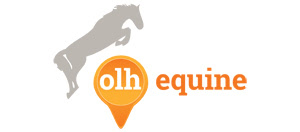Unusual sales patterns emerged in 2020.
Author of the article:James Bagnall
Publishing date:Jan 02, 2021

If you had to pick one word to describe the 2020 market for resale homes, it would be “stressed.”
Shrinking inventories combined with a sharp rise in demand triggered bidding wars for a majority of properties. Historically low rates for mortgages contributed to higher-than-expected bids, both on the part of the buyers and sellers. Not only that, the pandemic made the process of buying and selling more difficult, and re-shaped the kinds of properties in highest demand. The new mantra was space — not just for extra home offices but for big acreage well beyond the city cores.
Take all this together, and you have most of the explanation for the unusual sales patterns that emerged in 2020.
Consider first the sharp divergence between the biggest cities and smaller towns, as revealed in the latest tabulation by the Canadian Real Estate Association.
Ten of the 12 districts showing the biggest growth year-over-year were smaller urban areas in southern Ontario. These ranged from Kawartha Lakes, where the benchmark price for single-family homes jumped 29.2 per cent to $492,000 in November, to the Simcoe region, where realtors reported a 21 per cent climb in the benchmark price to $439,000. Both of these districts, along with Quinte, southern Georgian Bay and Barrie, benefitted from growing popularity of cottage properties.
They are also part of Toronto’s hinterland, which has expanded dramatically with the increased acceptance of home-based offices by many employers.
Remote working may be behind the rapid rise in resale prices in Woodstock, Tillsonburg, London and Brantford — towns to the west of metro Toronto that have traditionally supported legions of long-distance commuters. It’s possible some of these workers have opted to trade up in their home districts now that commuting costs are out of the equation, at least for the foreseeable future.
The only large city within the group of the 12 fastest-growing markets is Ottawa, where the benchmark price for single-family homes surged 22 per cent year-over-year to $593,000 in November.
The only other large city to come close was Montreal, which saw resale values increase 21 per cent to $472,000.
Metro Toronto, with resale prices up 13 per cent year-over-year to $1 million, was middle of the pack among the largest urban areas while Vancouver, Edmonton, Calgary all saw house price gains of less than 10 per cent. Other cities on the prairies — including Saskatoon, Regina and Winnipeg — also saw single-digit gains in benchmark prices.
On the prairies, the big factor dampening real estate values is weak prices for oil and other commodities. In B.C., the explanation for tempered gains is a combination of high prices and a foreign buyers tax for properties in greater Vancouver.
In Ottawa, the theme was catch-up. When home prices in Vancouver and Toronto surged from 2015 to 2017, they moved up here at a very measured pace. That pattern changed in mid-2019, when benchmark prices in Ottawa started growing fastest among the country’s largest cities.
During the pandemic, rural properties in the Ottawa Valley have appreciated faster than residences in the core of the city. Whether that pattern will continue in 2021 will depend a lot on whether employers insist that workers return to the office. We probably haven’t seen the end of stressed real estate markets.













